Great Gobi with Naadam festival tour
Tour description
Tour name: Gobi desert with Naadam festival
Start: UB-back to UB
Destination: Southern and Central parts of Mongolia
Goal: to get a taste of some of the Mongolian Gobi's highlights and attend the famous Naadam festival
Duration: 11 days, 10 nights
Group size: Min 4, Max - 19
Price: US $2553 p.p
Single supplement: US $650
Date: July 10th- July 20 2025
Why do we love this trip?
- Learn unique Mongolian Culture
- Discover Nomadic lifestyle
- Spot Wild and Domestic animals
- Visit and meet real Nomads
- Feel true silence and wild nature
- Enjoy fresh and clean air
The biggest festival (National Naadam) is held in the Mongolian capital Ulaanbaatar during the National Holiday from July 11 – 13, in the National Sports Stadium. Naadam begins with an elaborate introduction ceremony, featuring dancers, athletes, horse riders, and musicians. After the ceremony, the competitions begin. The competitions are mainly horseback riding. Naadam is the most widely watched festival among Mongols and is believed to have existed for centuries in one fashion or another. Naadam has its origin in the activities, such as military parades and sporting competitions such as archery, horse riding, and wrestling, that followed the celebration of various occasions, including weddings or spiritual gatherings. It later served as a way to train soldiers for battle. Now it formally commemorates the 1921 Revolution when Mongolia declared itself a free country. Naadam also celebrates the achievement of the new state. Naadam was celebrated as a Buddhist/shaman holiday until secularization in the 1930s. The three sports are called "Eriin 3 Naadam" which is called three games of man in English. Genghis Khan's nine horse tails, representing the nine tribes of the Mongols, are still ceremonially transported from Sukhbaatar Square to the Stadium to open the Naadam festival
Get yourself ready and be inspired by the beauty of Mongolia. Join us!
If you wish to pay with a bank transfer, please e-mail me at: [email protected]
If you wish to pay with a credit card, there will be a 3% extra charge, please proceed by clicking on the "Book now" button:
Book now

Included
- Hotels or Ger camps depend on the location
- Ground Transportation
- Sightseeing as per itinerary
- Entry fees
- Tour guide service
- Daily supply of bottled water
- All meals
Not included
- Travel Insurance
- Beverages
- Extra activity cost
- Extra baggage charge for domestic flights
- Single supplement in hotels and Ger camps
- International flight to/from Mongolia
- Visa
- Gratitude for guides, drivers
Detailed tour itinerary
Our guide will meet you at airport upon your arrival in Ulaanbaatar city/capital of Mongolia/ and take you to the hotel you stay. Free at leisure for the rest of the day. Prepare yourself; on the most of days of this tour, we'll spend a several hours on the road. Note: the camera with full battery, torch, and other stuffs/suitable clothing for horse/camel riding/.
Overnight in Hotel
Meals included
After breakfast you will see naadam's opening ceremony.
About Naadam festival
Naadam is held in during from July 11–13 annual, in the National Sports Stadium. Naadam begins with an elaborate introduction ceremony, featuring dancers, athletes, horse riders, and musicians. After the ceremony, the competitions begin. The competitions are mainly horseback riding. Naadam is the most widely watched festival among Mongols, and is believed to have existed for centuries in one fashion or another. Naadam has its origin in the activities, such as military parades and sporting competitions such as archery, horse riding and wrestling, that followed the celebration of various occasions, including weddings or spiritual gatherings. It later served as a way to train soldiers for battle. Now it formally commemorates the 1921 Revolution when Mongolia declared itself a free country. Naadam also celebrates the achievement of the new state. Naadam was celebrated as a Buddhist/shaman holiday until secularization in the 1930s. The three sports are called "Eriin 3 naadam" which is called three games of man in English. Genghis Khan's nine horse tails, representing the nine tribes of the Mongols, are still ceremonially transported from Sukhbaatar Square to the Stadium to open the Naadam festivities.
Overnight in Hotel
Meals: Breakfast, Lunch, Dinner
After breakfast, we depart for the Tsagaan Suvarga /white Stupa / which is absolutely one of best sights in Mongolia.
Tsagaan Suvarga
Tsagaan Suvarga is located in Ulziit Soum, in the Dundgobi province. Tsagaan suvarga is the stunning and legendary cliffs formed by deposits of sediment from millions of years. This cliff indicates different times by its colored layers containing 10 million years history. The stunning scenery makes awesome photos and chance to explore the area through the gorges and canyons. It makes you feel like you are in the time of Giant dinosaur.
Overnight in yurt camp
Meals:B,L,D
After the breakfast we've got another early start today leaving the Baga gazriin chuluu around at 7 am.
Yoliin am /Yol valley/
Yoliin Am is located 45km from province of Dalanzadgad. Altitude is 2800m from sea level. This is one of the best places to encounter wild animals and wander through the majestic canyons. This is the deep and narrow canyon in the Gobi GurvanSaikhan /Gobi three beauty / mountains. In the narrowest valley is named after Lammergeyer, which is called Yol in Mongolian. The Lammergeyer is old world Vulture. In there you can see 1-1.5m tick ice in the middle of gorges where it barely gets sunshine during summer time and the sky looks pretty narrow line between canyons.
Overnight in yurt camp
Meals: B,L,D
Today we are heading to stunning sand dune of Khongor in the Gurvan Saihkhan national park
Khongor sand dune
after having breakfast, we will be heading to the Khongor Sand Dunes-situated around 120 km from Yoliin Am. Often called as the singing dunes and surrounded with mountains. This grand sand dune stretches for 180km going from north-west to south-east. The most width part is 27km on the north-west section. The site is amazing. Khongor Sand Dunes are some of the largest and most spectacular sand dunes in Mongolia. Reaching to the top of sand hill will be exhausting and around 40 minutes to one hour. But the views of the desert from the sandy summit are breathtaking. The sand dunes are a great place for riding camel so we take camel ride there. May stay overnight in the tent if weather is fine.
Overnight in Ger camp
Meals: B,L,D
Bayan zag
Bayanzag, which means ‘rich in saxaul shrubs’, is more commonly known as the ‘Flaming Cliffs’, a name penned by the paleontologist Roy Chapman Andrews. First excavated in 1922, it is best-known worldwide for the number of dinosaur bones and eggs found in the area, which you can see in museums around the world. Even if you are not a ‘dienophile’, the beauty of the surrounding landscape is a good reason to visit. It’s a classic desert of rock, red sands, scrub, sun and awesome emptiness. Bayanzag is around 90km from Dalanzadgad. Stay overnight may in the tent if the weather is fine
Overnight in Ger camp
Meals: B,L,D
After breakfast we drive to the next destination which is the Saikhanovoo and Ongi temple in middle Gobi
Ongi Monastery
This small mountainous area along the river /Ongiin gol/ which is the tenth longest river of Mongolia with an overall length of 435 km. This temple makes a pleasant place to break a trip after long drive from Baynzag. OngiinKhiid is a sight worthy monastery on Ongiriver about 18 km from SaikhanOvoo. Formerly one of the largest monasteries in Mongolia, it was founded in 1660 and consisted of two temples complexes on the North and South of the Ongi Gol River. The older southern complex consisted of various administrative buildings as well as 11 temples. The northern complex, built in the 18th century, consisted of 17 temples - among them one of the largest temples in all of Mongolia. The grounds housed also 4 Buddhist universities. It was completely destroyed in 1939 under Khorloogiin Choibalsan, the then president and leader of the Communist Party of Mongolia. Over 200 monks were killed, and many surviving monks were imprisoned or forced to join the Communist controlled army. A large number of ruins including a tall stupa can be seen on the river and on the surrounding hills. In the 1990s, it was decided to rebuild the monastery. At present (2011), 13 monks live in the monastery.
Overnight in yurt camp
Meals: B,L,D
We've got another early start today. We drive to Kharhorin City . On the way you'll explore the magical place Tovhon khiid/temple/ which was founded in 1653 by Zanabazar.
Kharkhorin
In the mid-13th century, Karakorum was a happening place. Chinggis Khan established a supply base here and his son Ogedei ordered the construction of a proper capital, a decree that attracted traders, dignitaries and skilled workers from across Asia and even Europe. The good times lasted around 40 years until Kublai moved the capital to Khanbalik (later called Beijing), a decision that still incites resentment among some Mongolians. Following the move to Beijing and the subsequent collapse of the Mongol empire, Karakorum was abandoned and then destroyed by vengeful Manchurian soldiers in 1388.Whatever was left of Karakorum was used to help build, in the 16th century, the enormous monastery, ErdeneZuu monastery, which itself was badly damaged during the Stalinist purges. The rather nondescript Soviet-built town of Kharkhorin was built a couple of kilometers away from ErdeneZuuKhiid, and there is little of interest in the town itself
Overnight in Ger camp
Meals: B,L,D
The Mongolian Government declared Hustai National Park as a Specially Protected Area in 1993, one year after the initiation of the reintroduction project of the Takhi (Przewalski's horse) to the Hustain Nuruu. The HNP extends through the Khentii Mountains and includes the western edge of the Mongolian steppe at the boundaries of Altanbulag, Argalant and Bayankhangai Soums of Töv Province. The park is about 100 km from the capital city of Ulaanbaatar to the west.
The HNP covers 50,600 ha land which is home to 459 species of vascular plants, 85 species of lichens, 90 species of moss and 33 species of mushrooms. 44 species of mammals have been recorded, including Altai wapiti, Mongolian gazelle, roe deer, wild boar, wild sheep, ibex, Mongolian marmots, grey wolves, Eurasian lynx, Pallas cat, red fox, corsac fox and Eurasian badger. The 217 species of birds include golden eagle, lammergeier, great bustard, whooper swan, black stork, Daurian partridge and little owl. There are 16 species of fish, 2 species of amphibians, and 385 species of insects (including 21 species of ants, 55 species of butterflies, 10 species of bush crickets and 29 species of grasshoppers). A new species of soil insect has been found in the Hustai and given the scientific name of Epidamaeus khustaiensis.
In 2002, the Man and the Biosphere Reserves organization of UNESCO certified the HNP as a member of the world biosphere network of natural reserves. The HNPT was enrolled as a member of IUCN in 2007.
Overnight in Ger camp
Meals: B, L, D
Today we will drive back to Ulaanbaatar leaving Terelj NP. All you have to do is to sit back, relax and enjoy your journee. This day is for return to homeland and shopping for cashmere and souvenirs.
Overnight in Hotel
Meals: B, L, D
We will take you to the airport. Check your items when you're leaving the hotel. Good luck for your next trip.
Meals: Breakfast





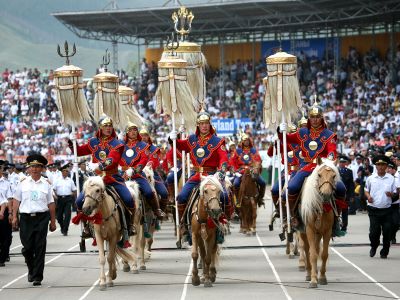
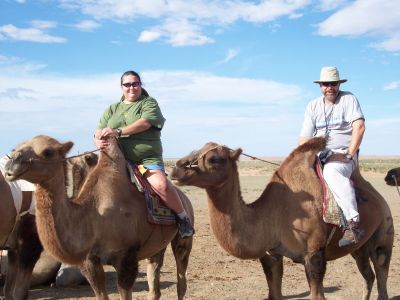
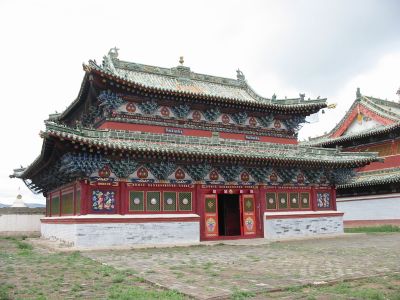
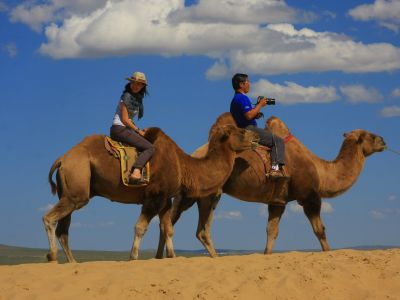
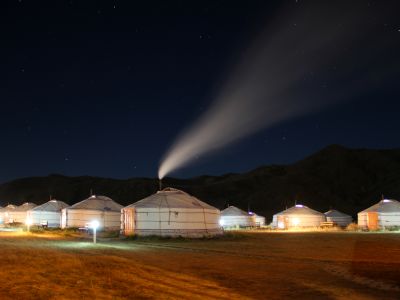
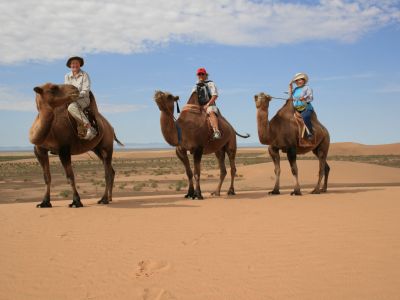
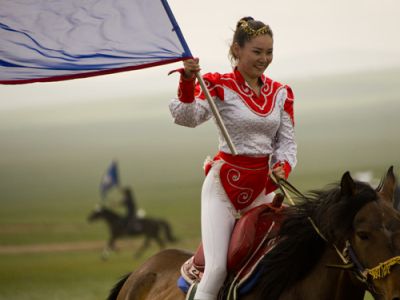
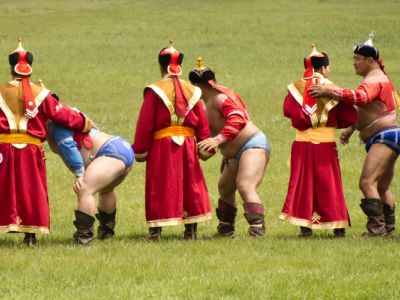
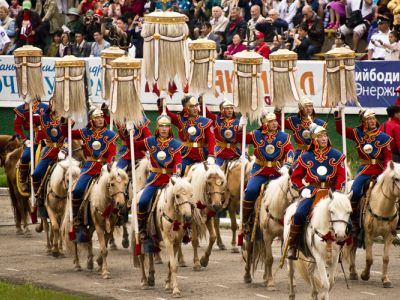
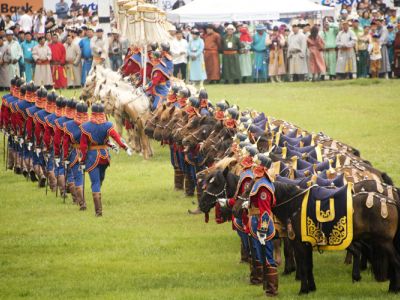
.png)